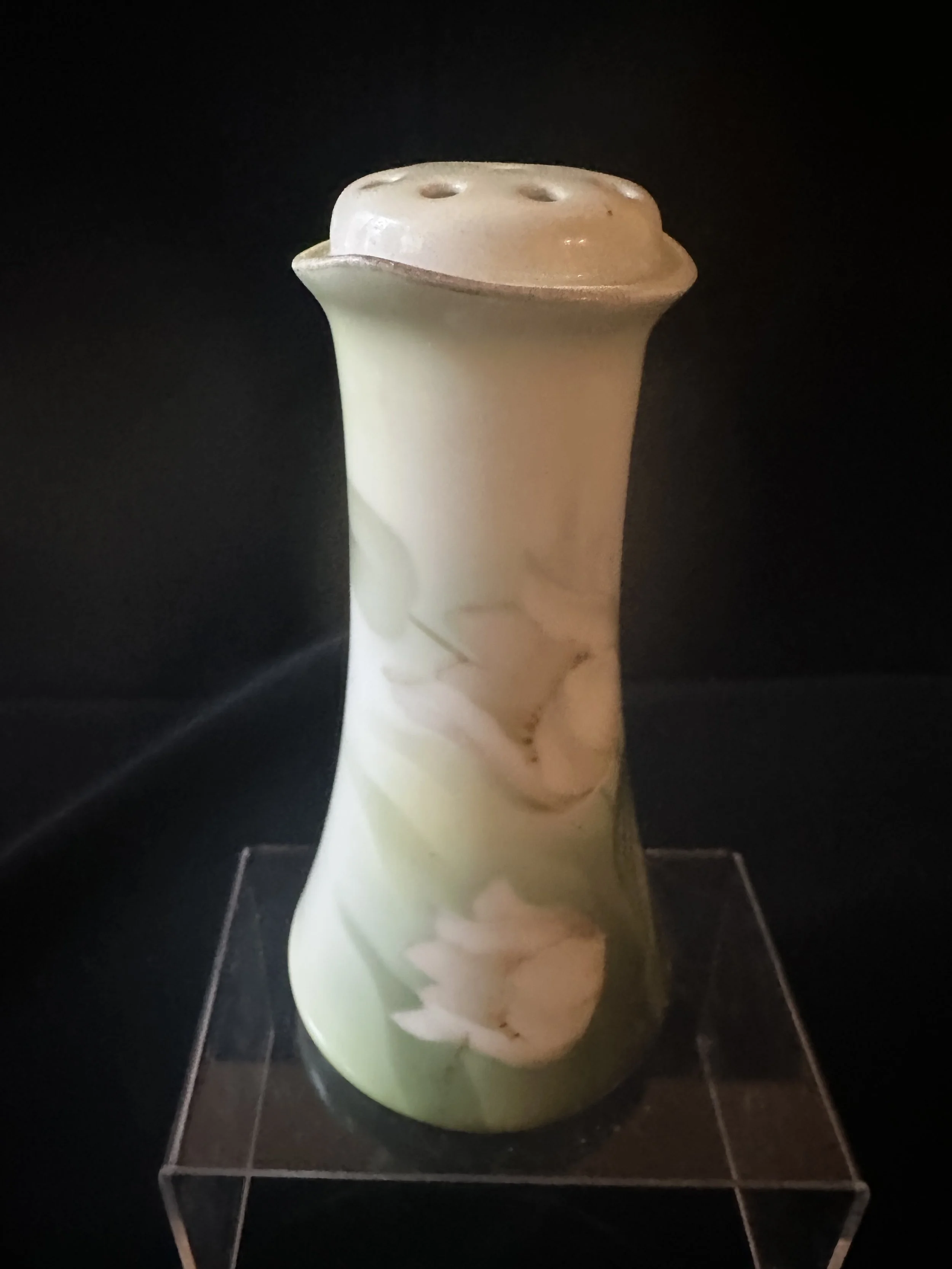Antique Hatpin Holders
🧷 What Are Hatpin Holders?
Vintage hatpin holders are charming and collectible items that were originally used in the late 19th and early 20th centuries to store hatpins—long decorative pins used to secure women’s hats to their hair. These holders are often admired today for their craftsmanship, beauty, and historical appeal. Here's a detailed overview:
Hatpin holders are small containers—usually around 4 to 6 inches tall—designed to hold and display hatpins upright. They often feature holes at the top to accommodate the pins securely, although some styles are open-mouthed like miniature vases.
📅 Historical Context
Late Victorian Era (c. 1880s–1900s): Hatpins became popular as women's hats grew larger and more elaborate.
Edwardian Era (1901–1910s): Peak popularity; women used long, decorative hatpins for fashion and practicality.
1920s and Beyond: As hats became smaller and hairstyles changed, hatpin use declined—so did the production of hatpin holders.
🧵 Materials & Styles
Hatpin holders come in a variety of materials and styles, often reflecting the aesthetics of their time:
Porcelain & China: Often hand-painted, sometimes with gilding or floral designs. Makers include:
Nippon (Japan)
RS Prussia (Germany)
Limoges (France)
Staffordshire & Royal Worcester (England)
Glass: Cut glass or pressed glass, sometimes with metal fittings.
Metal: Brass, silverplate, or pewter holders, often with ornate details.
Ceramic/Art Pottery: Arts & Crafts or Art Nouveau styles from makers like Weller or Roseville.
🌺 Common Decorative Motifs
Hand-painted florals
Gilded accents
Art Nouveau flowing lines
Art Deco geometric patterns
Figural forms (e.g., animals, people, or ladies' busts)
🔍 How to Identify Vintage Hatpin Holders
Look for:
Backstamps or maker’s marks (on the base)
Signs of hand-painting or transferware designs
Number of holes (some have 1–5 holes on a domed or flat top)
Miniature size, often much smaller than a regular vase
💰 Value and Collectibility
Values vary widely, depending on rarity, maker, condition, and style:
Common porcelain holders: $25–$75
Rare or signed pieces: $100–$300+
Art Nouveau or figural types: Often highly sought after
Condition is key—chips, cracks, or missing gilding can reduce value.
🧼 Care Tips
Handle with care; many are delicate and antique.
Use a soft cloth to clean; avoid soaking hand-painted or gilded pieces.
Keep out of direct sunlight to prevent fading.
